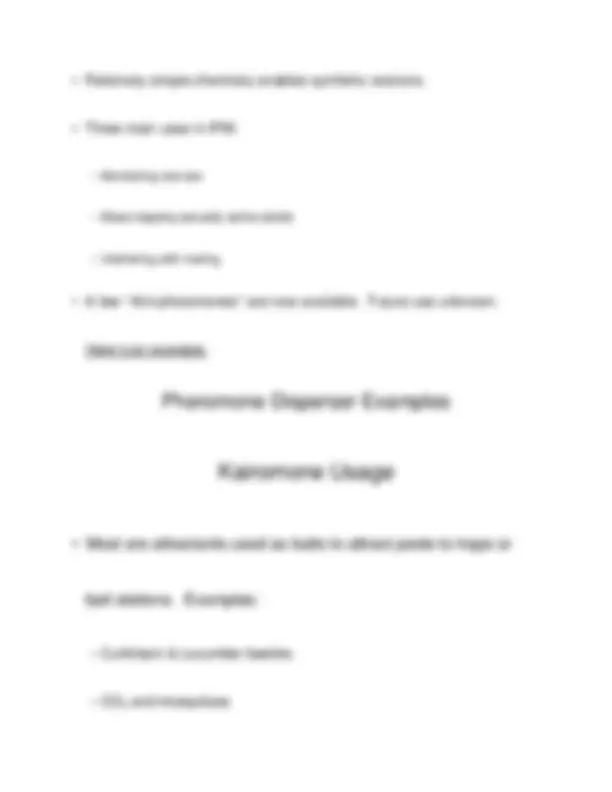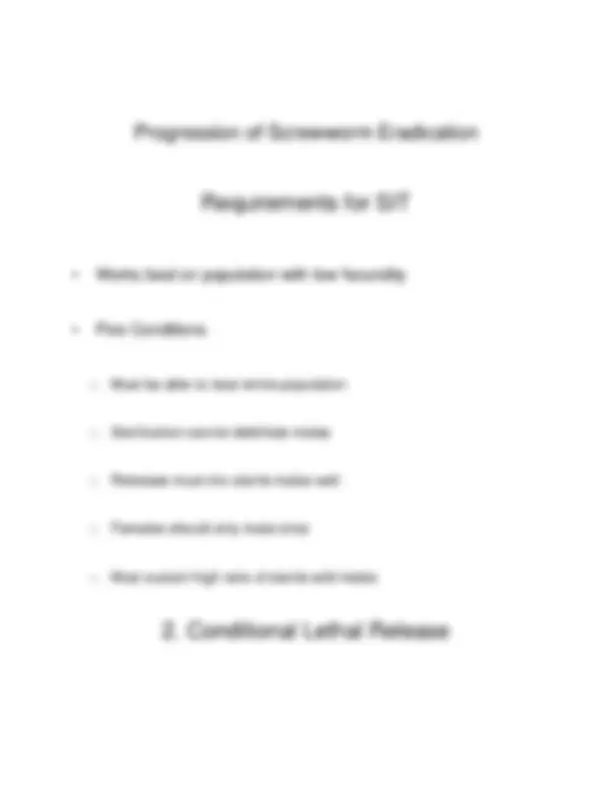








Study with the several resources on Docsity

Earn points by helping other students or get them with a premium plan


Prepare for your exams
Study with the several resources on Docsity

Earn points to download
Earn points by helping other students or get them with a premium plan
Community
Ask the community for help and clear up your study doubts
Discover the best universities in your country according to Docsity users
Free resources
Download our free guides on studying techniques, anxiety management strategies, and thesis advice from Docsity tutors
The benefits and concerns of using herbicide resistant crops (hrcs) in integrated pest management (ipm). It also explores behavioral control methods, focusing on pheromones, allomones, and kairomones, as well as genetic controls such as sterilization, conditional lethal releases, and hybrid sterility. Examples of pheromone and allomone usage, and discusses the challenges and advantages of each approach.
Typology: Exercises
1 / 10

This page cannot be seen from the preview
Don't miss anything!






